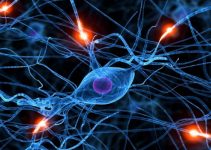Coffee is something that we all take for granted – it is readily available and so delicious to drink that we do not really think what actually happens to our bodies when we drink coffee. Have you ever wondered how it keeps us awake?
AsapSCIENCE explains the science of drinking coffee in an informative video they shared on YouTube. According to the clip, our bodies create adenosine when we are awake. This chemical binds to receptors in the brain, gradually making us feel sleepy because the brain soon feels tired. With all the adenosine receptors full, people would find it difficult to shake off sleep unless they reach for a cup of coffee.
The caffeine in coffee is similar in structure to adenosine. In the brain, caffeine competes with adenosine. As caffeine binds with the receptors, the brain no longer feels tired because though caffeine has a similar to adenosine, they have different properties. Thus, you feel alert once again.
Now, coffee does not stay in the bloodstream forever. As with other chemicals in the body, it will soon be eliminated. Since it has a half-life of 6 hours, you will feel only half of the coffee’s awesome alert effects after 6 hours. After another 6 hours, only a quarter of its effects will be felt. This is the reason why the coffee’s effects do not last the entire day and we often find ourselves feeling drowsy once again.
Another cup of coffee could bring back the alertness; though this has a limit to some degree as the body does need to go to sleep to replenish other chemicals and to repair cells and tissues.
By the way, many people are wondering why coffee appears to be quite addicting. Well, aside from the fact that it is delicious and could help people stay awake, coffee creates effects similar to drugs like cocaine though at a lower level. Moreover, as you continue drinking coffee, the brain creates more adenosine receptors; thus, it would take more coffee to keep you awake so you probably need a new cup ever few hours.
For a more detailed explanation about how coffee works in your brain, check out this video by AsapSCIENCE:





